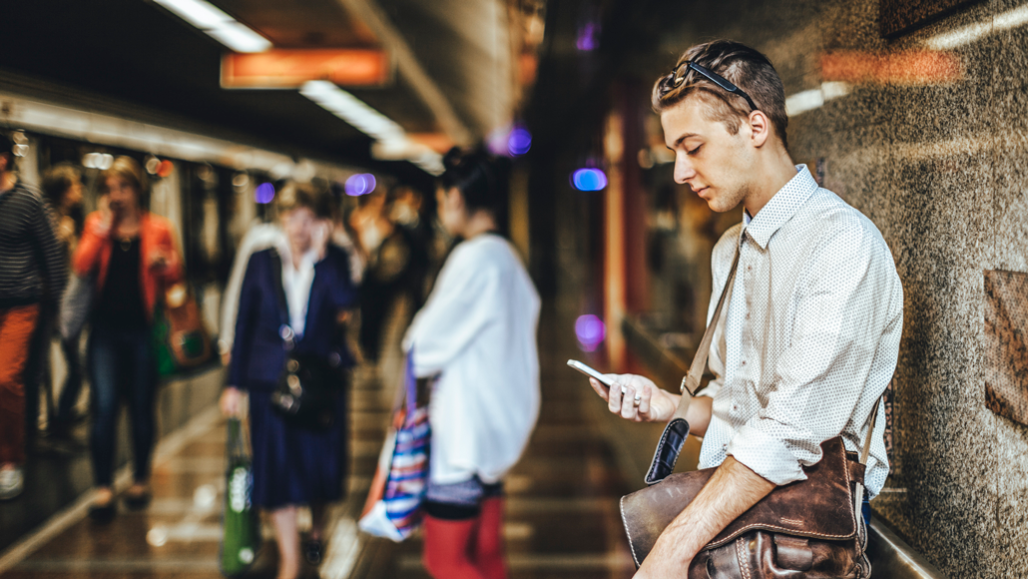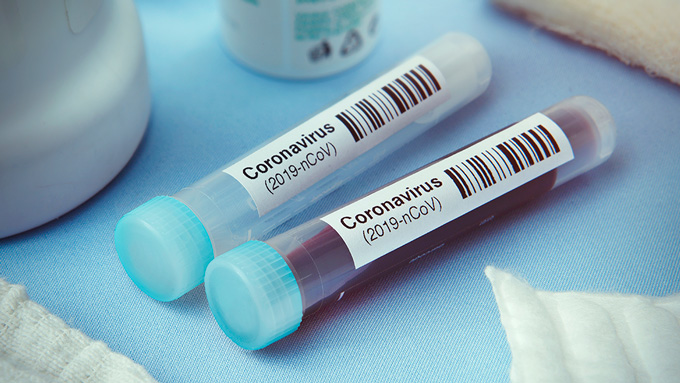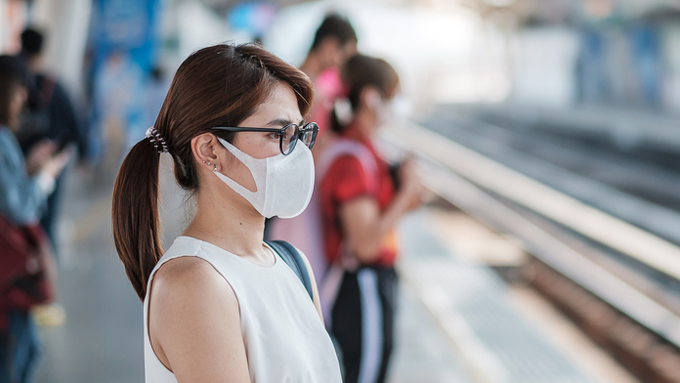What ‘community’ spread of coronavirus means
As COVID-19 spreads, the best advice for preventing the disease is to wash your hands

With “community spread” of the new coronavirus, public-health experts warn people in some areas may need to avoid crowds as much as they can, such as subway stations (pictured here), concerts and airports.
Eva-Katalin/E+/Getty Images
U.S. public health officials reported on February 26 that a 50-year-old California woman had become infected with the novel coronavirus that has been spreading around the world since late December. This case marks a troubling new phase of the outbreak in the United States, experts say. The reason: No one knows yet where or how she picked up the virus.
Until now, all U.S. cases were due to people who had been in China, where the viral infection first emerged, or who had been in contact with others known to be infected.
The woman had not traveled to China or had not been exposed to someone known to be carrying the virus. As such, she appears to be the first case in the United States of what’s known as community spread. That means she picked up her illness from some unknown infected person with whom she had come into contact.
Since the start of the outbreak, there have been more than 83,000 cases of the COVID-19, as the viral disease is now known. The sickness has shown up in at least 57 countries. A few regions — including Italy, Iran, South Korea and Japan — have reported sustained community spread. That means the virus is moving from person to person in places outside China’s borders.
The World Health Organization, or WHO, announced on February 28 that it had upgraded the risk of global spread by the COVID-19 virus to “very high.” It did not yet call the disease a pandemic. “We don’t see evidence yet that the virus is spreading freely in communities. As long as that is the case, we still have a chance of containing this virus,” said Tedros Adhanom Ghebreyesus in a news briefing. He is the director-general of WHO, which is based in Geneva, Switzerland.

Educators and Parents, Sign Up for The Cheat Sheet
Weekly updates to help you use Science News Explores in the learning environment
Thank you for signing up!
There was a problem signing you up.
Here’s what that California case means. We also explain what to expect in the coming days and months and what to do if you think you are infected.
What does the discovery of suspected community spread in California mean?
The California woman came to a local hospital with severe symptoms. Public health officials aren’t sure how she became infected with SARS-CoV-2. That’s the virus causing COVID-19. Without a clear idea of her infection’s source, she probably wasn’t the first person to get infected in that area, says Aubree Gordon. Gordon is an epidemiologist at the University of Michigan in Ann Arbor.
“It [probably] means there’s an unknown number of other cases” in Northern California, Gordon says. “It’s probably not a super large number,” she adds. There is the worry, however, that “there may be a large number of people who are infected but haven’t started to show symptoms.”
One reason some infections may go unnoticed is that it currently is the season for respiratory diseases. Influenza and the common cold have symptoms similar to COVID-19. Indeed, flu and colds remain the likely culprit for most current cases of respiratory disease in the United States. So, against the backdrop of so many cold and flu cases, the new coronavirus will be hard to detect.
If health officials conducted more tests, they’d probably find more cases, says Michael Osterholm. He’s an epidemiologist at the University of Minnesota in Minneapolis. “Absence of evidence is not evidence of absence [of disease],” he notes.
When will COVID-19 become more widespread in the United States?
That’s hard to say right now. Experts have been expecting community spread. That’s based on the findings of computer models that track where and when the virus might spread from China. Those models had indicated that COVID-19 probably had already been introduced in the United States. The California case now hints that there may be undetected infections across the country.
People need to “prepare themselves for the possibility that there will be multiple outbreaks,” Gordon says. Throughout the United States, this virus may spread widely “in the coming months to a year,” she says. Or, she warns, “It could be days. It’s really hard to say.”
Katelyn Gostic agrees. She works in Illinois at the University of Chicago. There she studies the spread of infectious diseases. “We should definitely be prepared for the possibility that the outbreak is going to grow in the United States,” she says. That doesn’t mean people should panic, she adds. From what is already known about the virus, most people “are going to be just fine even if they get sick.” But people should be prepared to change their behaviors. That may mean avoiding crowds and staying home when symptoms of infection emerge.
How many undetected cases are out there?
No one knows for sure how many people have been infected with SARS-CoV-2. That’s partly because there aren’t enough kits to test everyone. It’s also partly because people may be infected with the virus but have no symptoms or very mild ones. Such people may still be able to infect others.
For instance, a woman from China passed the virus to colleagues in Germany before she knew she was ill. That case was controversial. Researchers have found other evidence of people with very mild or no symptoms transmitting the virus. One was a woman in Wuhan, China. She gave the virus to five relatives in Anyang, China. The woman never had symptoms. Tests would later show she had the virus, according to a February 21 report in JAMA. Two of her relatives developed severe disease.
Health officials in Nanjing, China, tracked down other people who had been in contact with COVID-19 patients. They report finding that among those contacts were 24 people who had no symptoms when they were tested for the virus. Five of them would go on to become sick. Twelve also had chest X-rays that suggested they were infected. But especially troubling, seven of these infected contacts never showed signs of disease.
People with symptoms were infectious for up to 21 days. People with no symptoms tended to be younger. They also tended to have detectable virus for a median of four days. But one man with no symptoms passed on the virus to his wife, son and daughter-in-law. He may have been infectious for up to 29 days, researchers now note in a report that has not yet been peer reviewed by other scientists.
What’s more, people may still give off virus after they are no longer sick. Four health-care workers from Wuhan still had positive test results five to 13 days after their symptoms cleared. Researchers shared this observation February 27 in JAMA. Researchers don’t yet know whether viruses that are present after symptoms disappear are infectious.
“There’s really no doubt that there are many undetected cases,” says Erik Volz. He’s a mathematical epidemiologist. He works in England at Imperial College London.
Undetected cases matter because they may seed outbreaks when travelers carry them to other countries, says Gostic. And even the best efforts to screen airline passengers for COVID-19 will miss about half of cases, Gostic and her colleagues reported February 25 in eLife.

Those missed cases at airports “are not due to correctable mistakes,” Gostic says. It’s not that sick travelers are trying to avoid detection. And it’s not that screeners are bad at their jobs. “It’s just a biological reality,” she says, that most infected travelers won’t realize they’ve been exposed and won’t show symptoms.
That is true for most infectious diseases. But the share of COVID-19 cases with mild or undetectable disease poses a big challenge. So does the ability of this virus to spread through the air. People may catch the virus without ever knowing they came into contact with it. These people could unknowingly start epidemics in new places. “We just see this as inevitable,” Gostic says.
How widely will the coronavirus spread?
As of February 28, the virus has infected more than 83,000 people in 57 countries.
Because this coronavirus hadn’t infected people before the outbreak in China, no one has prior immunity to it. So this coronavirus spread might be similar to pandemic flu, Volz says. Although seasonal flu circulates around the world each year, pandemic flu is caused by new viruses that haven’t previously infected humans.
Examples include the 1918 “Spanish flu”, the “Asian flu” of 1957 and 1958, and the H1N1 flu in 2009. Depending on the country, that 2009 flu infected 5 percent to 60 percent of people. The 1918 pandemic infected an estimated third to half of everyone alive at the time, Volz says.
About this story
Why are we doing this story?
There has been a great deal of misinformation surrounding the new coronavirus disease, called COVID-19. Scientists are still working to understand the virus and its spread. We wanted to fill readers in on the latest scientific evidence and expert advice on what to expect when the virus begins to spread in the United States.
How are we reporting this story?
Usually only one reporter will work on a story with editors. But because the research on the coronavirus is rapidly evolving, a team of reporters and editors are working together to gather relevant evidence and put facts in front of readers as quickly as possible.
How did we take steps to be fair?
We consulted a variety of experts and scientific publications. Some of the scientific results have been peer reviewed and published in journals. Some results, such as those posted on the medRxiv.org or bioRxiv.org preprint servers, have not been peer-reviewed by other scientists, which we note where relevant.
What’s this box? Learn more about it and our Transparency Project here. Can you help us by answering a few brief questions?
There is still opportunity to contain SARS-CoV-2. On February 26, the WHO noted that the number of new cases reported outside China was greater than the number within China for the first time. Says Volz, this suggests that “China has at least partial control of their epidemic.”
Communities might take steps to help limit spread of the virus, Volz says. Among examples, he notes, “are no-brainers like school closure.” Children haven’t been suffering much severe illness from COVID-19. But if they get infected, they could spread the virus to their families and others. Restricting travel, closing public transportation and banning mass gatherings (like concerts) also should slow the spread of this virus.
The rest of the world probably won’t see the explosive growth of cases that Wuhan did, Gostic says. “The first emergence of a virus is always a worst-case scenario,” she says. Why? “No one is prepared for it and people who are getting infected at first have no idea that they have a novel pathogen.”
So how can I tell if I’m infected?
People with COVID-19 often have a dry cough. Some find themselves short of breath. Most will develop a fever. These are the symptoms that showed up in patients in China.
One tricky thing is that these symptoms also are seen with the flu. And it’s still flu season in the United States. In fact, “February was a bad month in a lot of communities” for the flu, says Preeti Malani. This infectious disease specialist works at the University of Michigan School of Medicine in Ann Arbor. “If people haven’t gotten flu shots, it’s not too late,” Malani says
Respiratory illnesses caused by other viruses usually don’t bring a fever, she says. Colds often include a runny nose, but that hasn’t been a symptom for COVID-19.
What should I do if I think I do have COVID-19?
If you have a fever and respiratory symptoms, call your medical provider ahead of time, Malani says. They can let you know what the next step is. “This is not something that you can just walk into an urgent-care [clinic] and easily get tested,” she says. Local health departments, with help from physicians, determine who should be tested for the new virus.
The Centers for Disease Control and Prevention in Atlanta, Ga., initially did all testing for the new virus. But the Association of Public Health Laboratories expects more labs soon will be able to also run these tests.
The risk of getting severely ill appears to be fairly low for most people. About eight in every 10 COVID-19 cases have been mild. That’s according to a report on more than 44,000 confirmed cases in China.
But the virus is estimated to kill about 2 in every 100 people it infects. Those it kills tend to be the elderly and people who had other health conditions, such as diabetes and cardiovascular disease. Yet, Gostic warns, “Even though individual risk may be low, there’s still a need to take the situation seriously” to protect others in your community. She recommends doing what you can to limit spread if COVID-19 starts to show up near you.
People should stay home from work and school when they are ill. They should cover their cough and wash their hands often. If soap and water aren’t available, people should use hand sanitizers. Start practicing those measures now, Gostic advises. It could help to limit the spread of other diseases, such as flu and colds. And you will be better prepared for when COVID-19 might emerge in your community.








